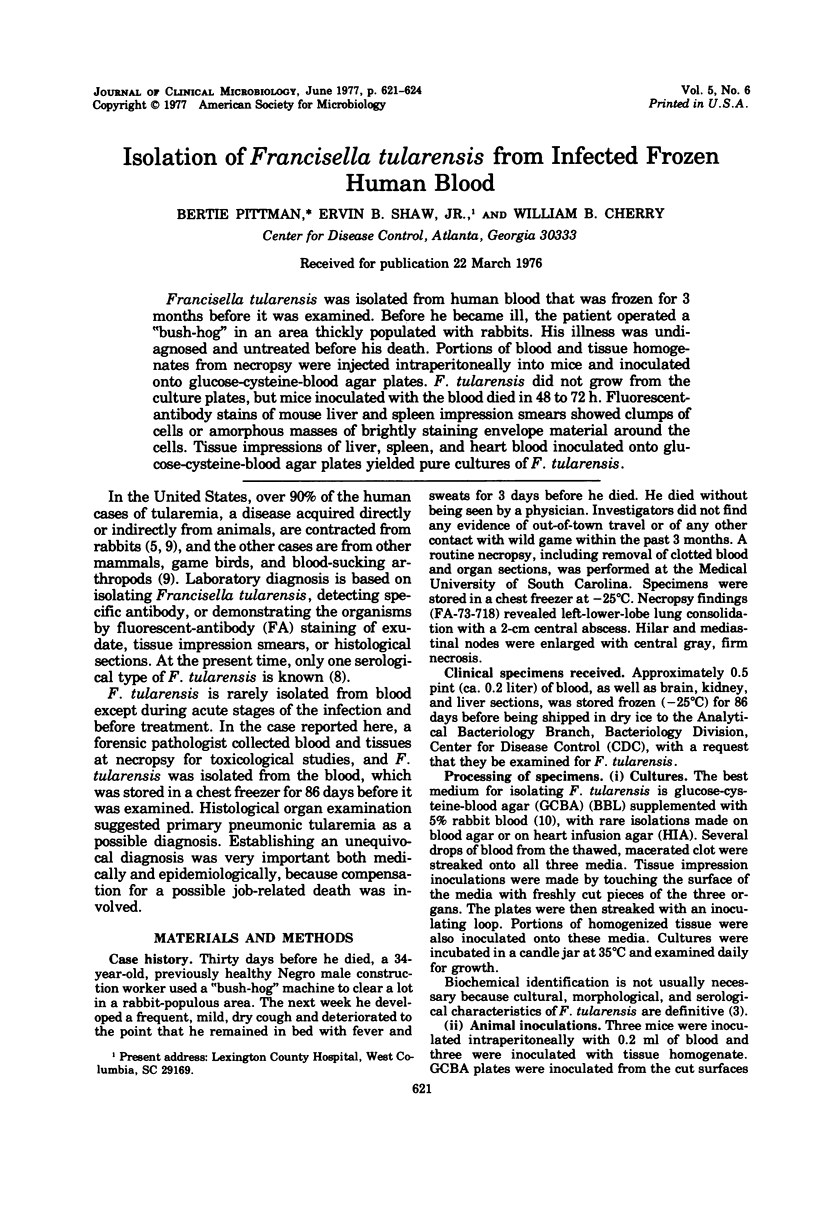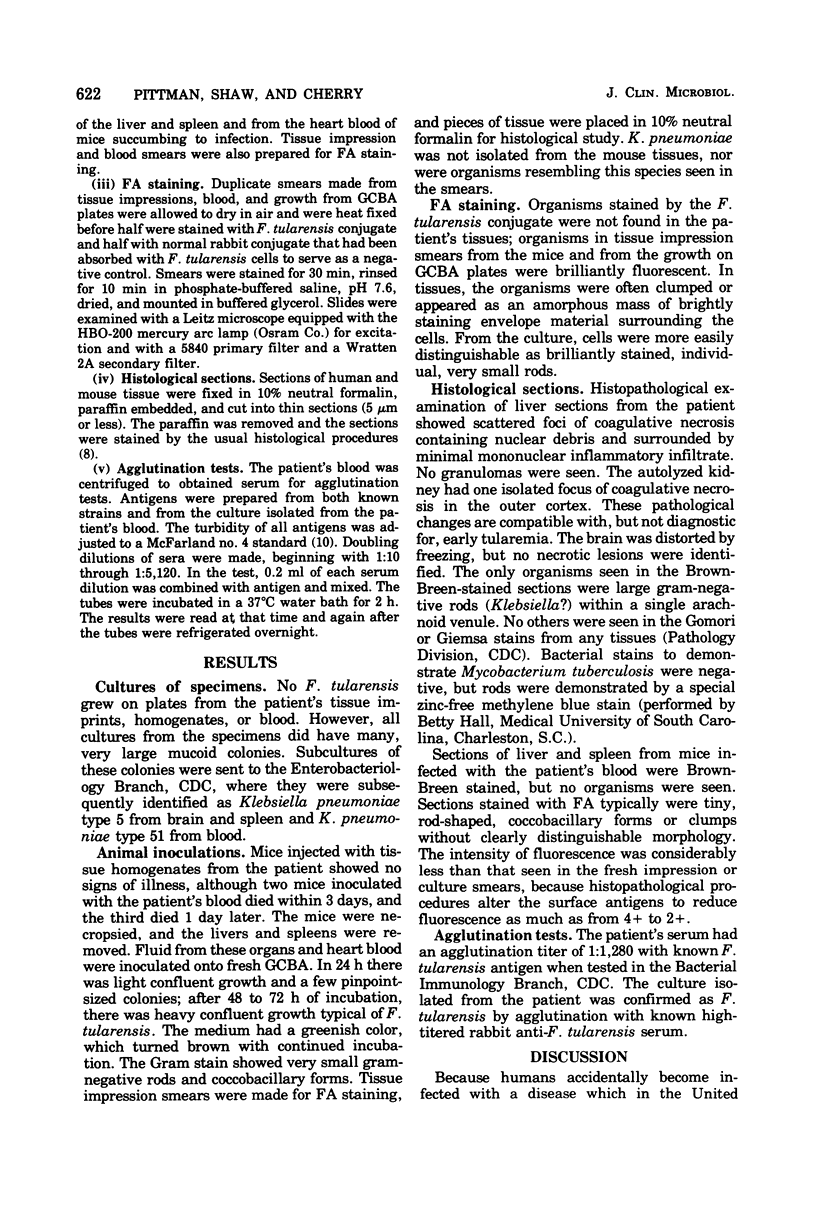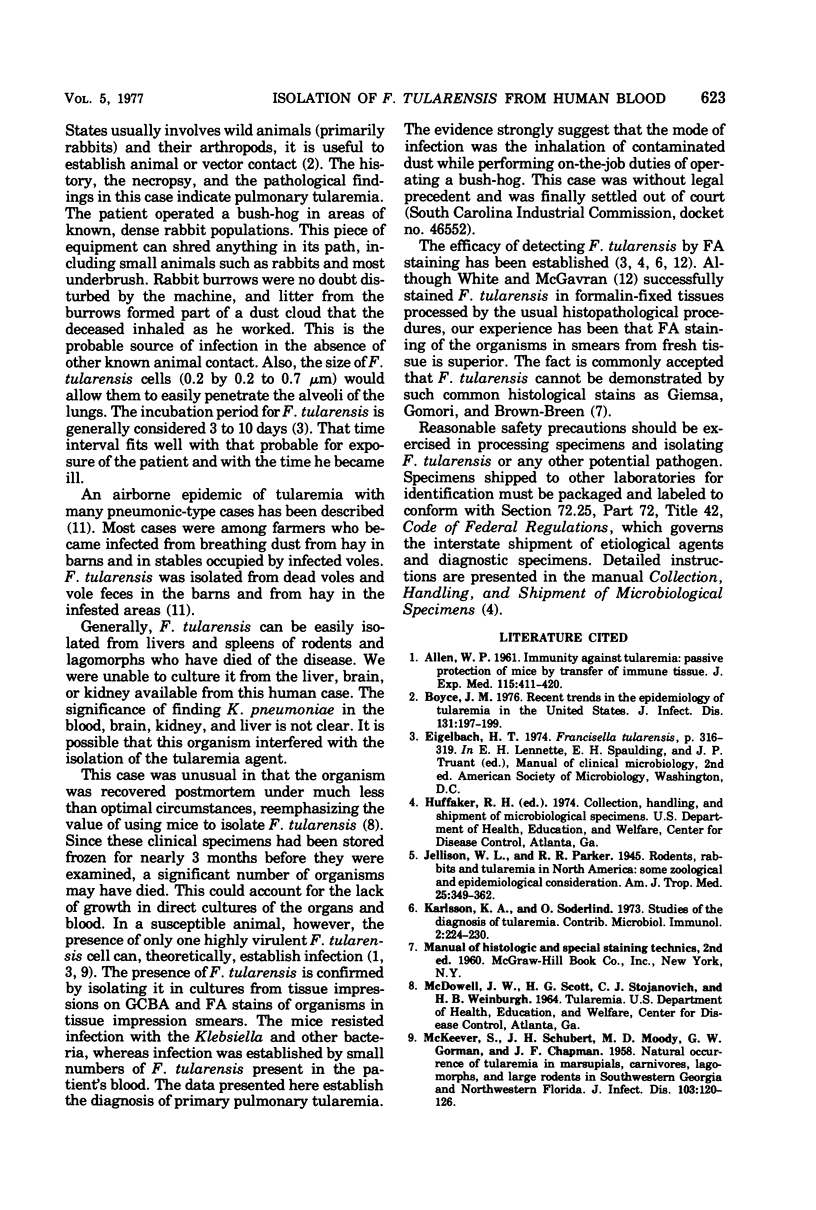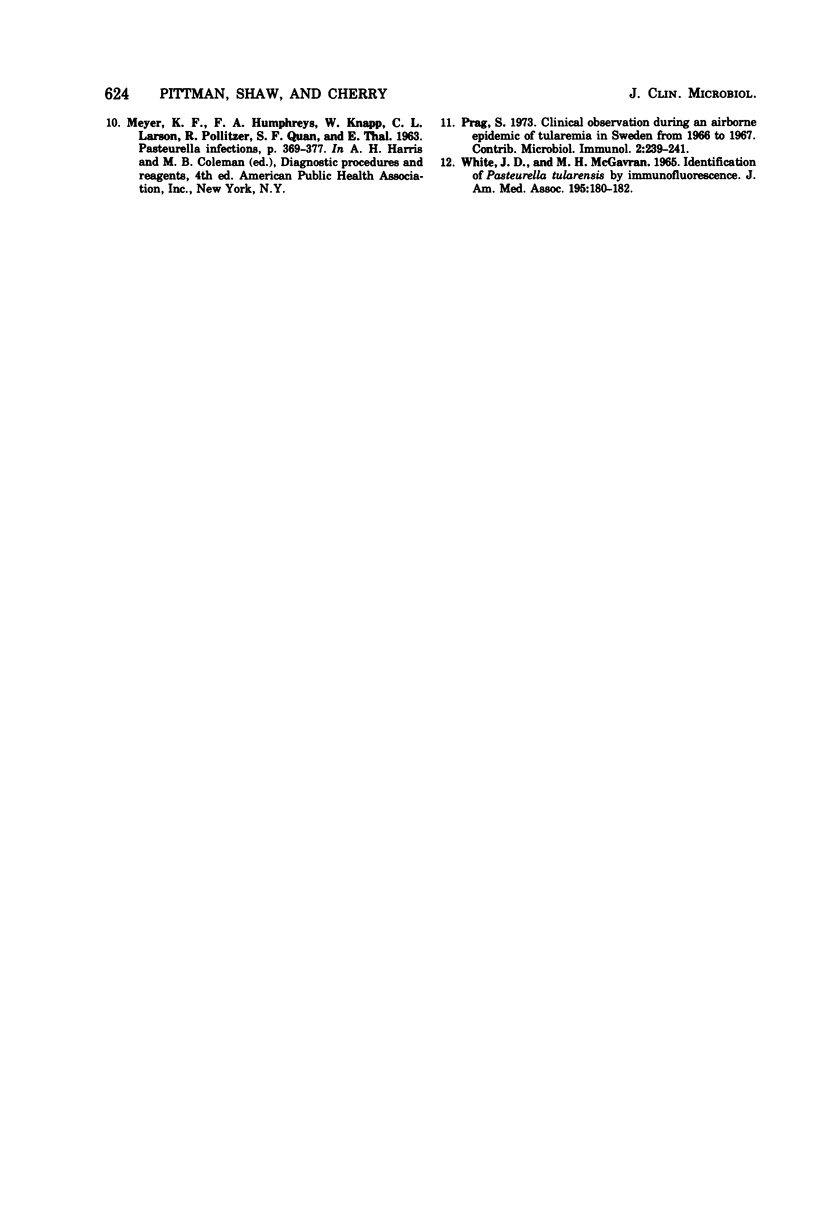Abstract
Francisella tularensis was isolated from human blood that was frozen for 3 months before it was examined. Before he became ill, the patient operated a "bush-hog" in an area thickly populated with rabbits. His illness was undiagnosed and untreated before his death. Portions of blood and tissue homogenates from necropsy were injected intraperitoneally into mice and inoculated onto glucose-cysteine-blood agar plates. F. tularensis did not grow from the culture plates, but mice inoculated with the blood died in 48 to 72 h. Fluorescent-antibody stains of mouse liver and spleen impression smears showed clumps of cells or amorphous masses of brightly staining envelope material around the cells. Tissue impressions of liver, spleen, and heart blood inoculated onto glucose-cysteine-blood agar yielded pure cultures of F. tularensis.
Full text
PDF



Selected References
These references are in PubMed. This may not be the complete list of references from this article.
- ALLEN W. P. Immunity against tularemia: passive protection of mice by transfer of immune tissues. J Exp Med. 1962 Feb 1;115:411–420. doi: 10.1084/jem.115.2.411. [DOI] [PMC free article] [PubMed] [Google Scholar]
- Boyce J. M. Recent trends in the epidemiology of tularemia in the United States. J Infect Dis. 1975 Feb;131(2):197–199. doi: 10.1093/infdis/131.2.197. [DOI] [PubMed] [Google Scholar]
- McKEEVER S., SCHUBERT J. H., MOODY M. D., GORMAN G. W., CHAPMAN J. F. Natural occurrence of tularemia in marsupials, carnivores, lagomorphs, and large rodents in southwestern Georgia and northwestern Florida. J Infect Dis. 1958 Sep-Oct;103(2):120–126. doi: 10.1093/infdis/103.2.120. [DOI] [PubMed] [Google Scholar]


